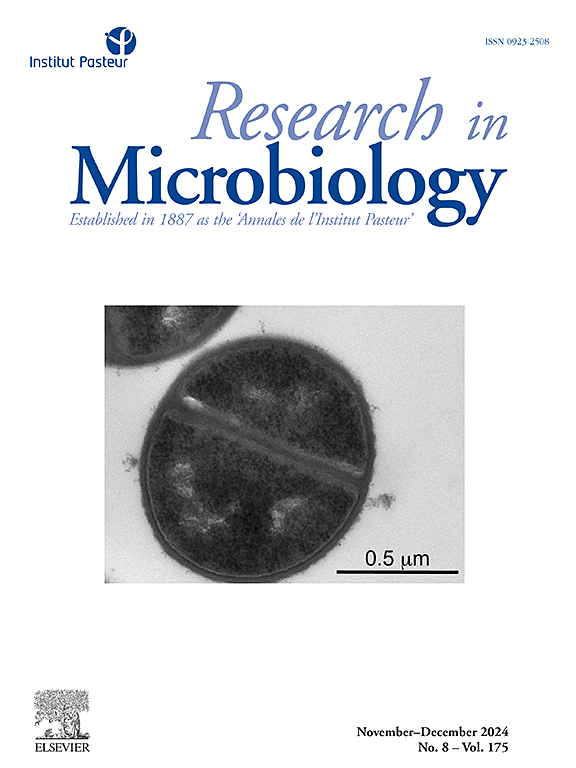通过组蛋白去乙酰化酶抑制剂关闭脂性耶氏菌酵母到菌丝的转化。
IF 3.4
4区 生物学
Q3 MICROBIOLOGY
引用次数: 0
摘要
真菌可以发展出多种形态,在不同的环境条件下生存、定植、适应和生存。一般来说,两种形态包含其他形态:酵母(单细胞)和菌丝(多细胞)。在特定条件下,有些真菌可以采用这两种细胞形态,因此,它们被称为二态的。组蛋白乙酰化和去乙酰化是众所周知的染色质重塑的重要机制,控制细胞分化过程。所涉及的反应分别由组蛋白乙酰转移酶(HATs)和组蛋白去乙酰化酶(HDACs)催化。本研究以多脂耶氏菌为二态真菌模型,研究了HDAC的化学抑制作用对真菌生长和酵母菌-菌丝转换的影响。为此,我们测试了化合物丁酸钠(SB)和丙戊酸(VPA)作为表观遗传调节剂。我们的研究结果表明,由于其脂溶性,脂溶菌耐受高剂量的这些抑制剂。然而,一旦真菌的代谢能力被克服,SB和VPA强烈抑制菌丝生长,这表明组蛋白乙酰化在这一过程的调节中起关键作用。本文章由计算机程序翻译,如有差异,请以英文原文为准。
Switching off the yeast-to-hyphae transition in Yarrowia lipolytica through histone deacetylase inhibitors
Fungi can develop a variety of morphotypes to survive, colonize, adapt and prevail under different environmental conditions. In general, two morphological shapes encompass the others: yeast (unicellular) and hyphae (multicellular). Under specific conditions, some fungi can adopt these two cellular morphologies, and for this reason, they are called dimorphic. Histone acetylation and deacetylation are well-known important mechanisms of chromatin remodelling that control cell differentiation processes as dimorphism. The reactions involved are catalysed by histone acetyltransferases (HATs) and histone deacetylases (HDACs), respectively. In the present work, we used Yarrowia lipolytica as a dimorphic fungal model to investigate the effect of HDAC chemical inhibition on the growth and yeast-to-hyphae switch of fungi. For this purpose, we tested the compounds sodium butyrate (SB) and valproic acid (VPA) as epigenetic modulators. Our results indicated that Y. lipolytica tolerates high doses of these inhibitors due to its lipolytic nature. However, once the metabolic capability of the fungus is overcome, SB and VPA strongly suppress hyphal growth, suggesting that histone acetylation plays a pivotal role in the regulation of this process.
求助全文
通过发布文献求助,成功后即可免费获取论文全文。
去求助
来源期刊

Research in microbiology
生物-微生物学
CiteScore
4.10
自引率
3.80%
发文量
54
审稿时长
16 days
期刊介绍:
Research in Microbiology is the direct descendant of the original Pasteur periodical entitled Annales de l''Institut Pasteur, created in 1887 by Emile Duclaux under the patronage of Louis Pasteur. The Editorial Committee included Chamberland, Grancher, Nocard, Roux and Straus, and the first issue began with Louis Pasteur''s "Lettre sur la Rage" which clearly defines the spirit of the journal:"You have informed me, my dear Duclaux, that you intend to start a monthly collection of articles entitled "Annales de l''Institut Pasteur". You will be rendering a service that will be appreciated by the ever increasing number of young scientists who are attracted to microbiological studies. In your Annales, our laboratory research will of course occupy a central position, but the work from outside groups that you intend to publish will be a source of competitive stimulation for all of us."That first volume included 53 articles as well as critical reviews and book reviews. From that time on, the Annales appeared regularly every month, without interruption, even during the two world wars. Although the journal has undergone many changes over the past 100 years (in the title, the format, the language) reflecting the evolution in scientific publishing, it has consistently maintained the Pasteur tradition by publishing original reports on all aspects of microbiology.
 求助内容:
求助内容: 应助结果提醒方式:
应助结果提醒方式:


